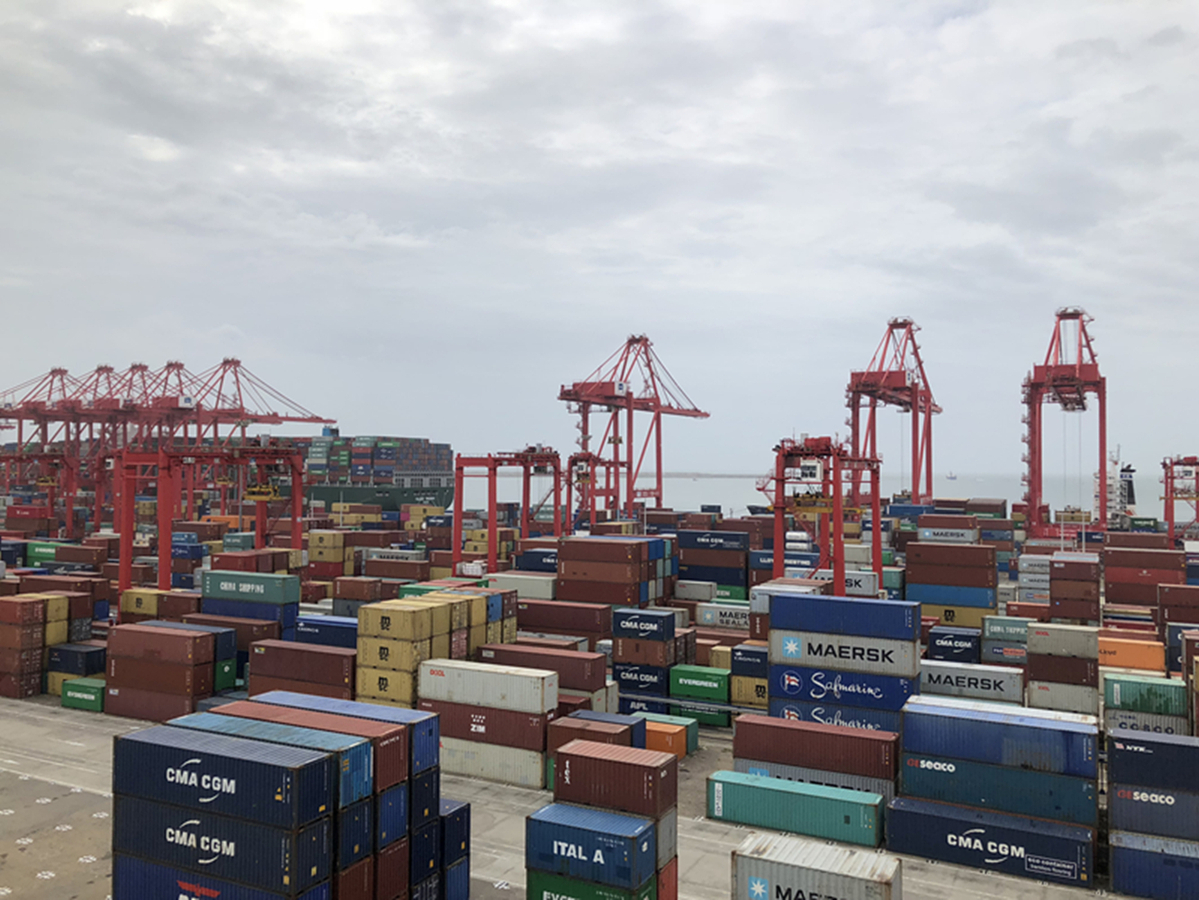Electric giants spark advances


For 24 hours a day and 7 days a week, there are 40 rubber-tired gantry cranes, or RTG cranes, busy loading and unloading containers in the container yard of the Colombo International Container Terminals, or CICT, the joint venture between China Merchants Holding International and Sri Lanka Port Authority.
These giant machines, which are more than 25 meters high and 40 meters wide, are a "must-have" for every container terminal as they are the most widely used for picking up containers and loading them onto cargo vessels.
Traditional RTG cranes are driven by diesel generator sets, which inevitably produces exhaust emissions, but in the container yard of the CICT, there is no loud noises or a pungent odor from the diesel generators, because of CICT's modification project last year.
Wang Yuxing, functioning manager of the CICT, said the joint venture last year has converted all its 40 traditional RTG cranes to ERTG (Electrified Rubber Tired Gantry cranes) by upgrading the existing RTG cranes to an electric system in order to modify their driving power from the built-in diesel-generator set to electricity.
Wang said the first electrified rubber-tyred gantry cranes in China was unveiled in 2008 at the Shekou container terminal in Shenzhen, Guangdong province.
He said at present, almost all major ports in China use ERTG, but the modification in Colombo port makes it the first of its kind in Sri Lanka and the largest green terminals in South Asia.
Better protection
Aravinda Wanniarachchi works as RTG and Quay Crane operator for the CICT. His daily job is to operate the machine inside the RTG cabin, which is around 20 meters above ground.
Wanniarachchi said he needs to load and unload almost 65 TEUs (20-foot, or 6.1-meter standard containers) per hour and work 6-8 hours per day. Before the modification project started, Wanniarachchi said he often felt dizzy during working because of the loud noise and air pollution.
But now, the crane operator's working environment has been largely improved.
The project has applied world-recognized advanced green environmental protection technology, with innovation and tropical-environment adaptive modification, which not only reduced air pollution and noise, but also reduced operating and maintenance costs and increased equipment attendance.
Wang said the new technology reduces fuel consumption by an estimated 95 percent. More specifically, the modification has reduced carbon dioxide emissions by 3,792 tons per year, which has exceeded Sri Lanka's environment-friendly standards. It also saves $1.5 million in the port's annual economic costs.
Sri Lanka Ports Authority Chairman, Doctor Parakrama Dissanyayake, said that Sri Lanka attaches great importance to environmental protection and the CICT's ERTG project had set an excellent example for other companies in the port and shipping industry in the country.
Wanniarachchi also said the project has increased his work passion.
"I am happy to see that the CICT has taken environmental friendly policies as a priority. I am proud to be part of such a company" he said.



































